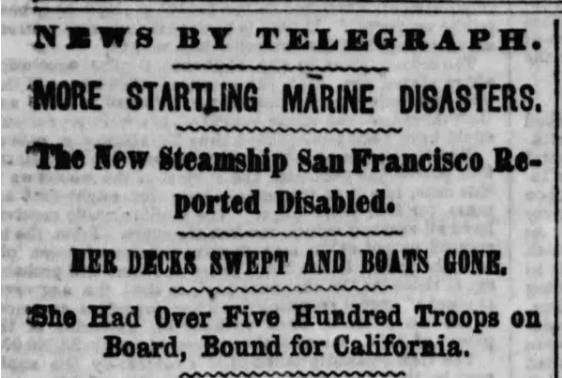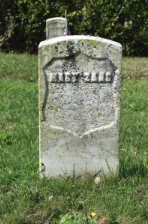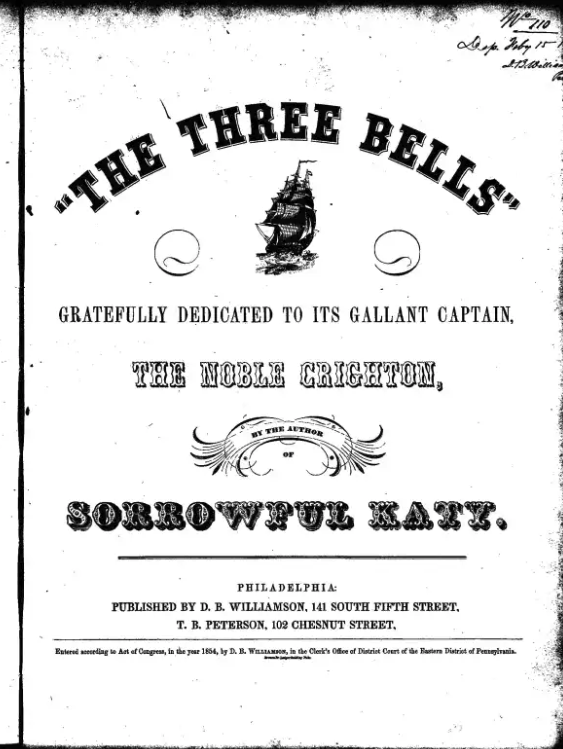The 3rd Artillery and the San Francisco, Disaster at Sea
In the Fall of 1848, the 3rd United States Artillery arrived at Fort Adams, in Newport, Rhode Island at the end of the Mexican American War. The Field and Staff and 3 Companies made their home in Newport. It was notated in the September 1848 Port Return that the Regimental Band, made up of 16 musicians arrived at Fort Adams on the 28th of the month, coming from Fort Monroe in Virginia.
Post Return, Fort Adams. September 1848
Tragedy struck the Regimental Band of the 3rd within two months of arriving in Newport. Mary Zang, the daughter of Private Christian Zang died in November She is buried in the Fort Adams Cemetery. No cause of death is listed.
The Companies of the 3rd would change from time to time, but the band became a staple of fort life. In 1850, you can see the musicians listed in the Federal Census.
1850 United States Census
1853 - Orders to California
In 1853 there were still three companies of the 3rd Artillery stationed at Fort Adams, with other companies of the regiment throughout the northeast, and a few companies in Texas.
On September 26, 1853, orders were issued that would have the companies meet at Fort Columbus in New York Harbor and prepare to travel to California. There was no real thought as to how to move an entire company of Artillery, including men and equipment from one coast to the other. There would be almost 500 men to move, and many families..
Brooklyn Evening Star, December 22, 1853
It was decided that the brand-new steamship San Francisco would move the troops to California by way of Cape Horn. The San Francisco was made using new technology that had not been tested. It was decided that the journey to California would be the major test of this technology.
At 9:00am on December 22, 1853, the San Francisco set sail for Cailfornia with possibly 750 people on board. There were about 500 members of the 3rd Artillery (13 members of the Regimental Band and company musicians being part of this number), 100 to 150 crew members, families of officers, and a few passengers, one a Naval officer would become a hero.
The ship was so full that over 300 enlisted men slept on the deck in makeshift tents.
Almost immediately the wind picked up and eventually the San Francisco ran head on into a late season hurricane.
On the evening of the 23rd, the ship suffered mechanical issues that would force her to reduce speed as the storm intensified. On Christmas Eve the air pump gave out and the ship was dead in the water. Later that day a wave crashed over the deck, ripping off the state rooms, washing 150 overboard to their deaths. Two people would be washed back to the ship by some miracle.
Word gets out and the Rescue
Newport Daily Herald, January 6, 1854
The first ship able to offer aid the San Francisco was the bark Kilby, sailing from New Orleans. She arrived on Tuesday, December 27. They were able to rescue over 100 people before the storm forced the two ships apart.
Later the Three Bells, sailing from Liverpool to Nova Scotia and the Antarctic, sailing from New York to Liverpool, would help to rescue the remaining survivors. Every survivor was off the San Francisco by January 5, 1854.
Well over 200 people died in this disaster at Sea. (We will tell the complete story another time…)
The Music
Hear some of the music composed about the wreck of the San Francisco.
This first work tells the complete story of the disaster. The “Wreck of the San Francisco” was composed by Oscar Comettant in 1854.
The Three Bells Quick Step was composed in 1854 by D.B. Williamson. He dedicated it to both the Captain of the Three Bells and to Lt. Murray of the U.S. Navy. Lt. Murray would become a hero for his brave actions in helping to rescue people. He was a passenger on the San Francisco.
The Three Bells Polka, was composed by T.J. Cook in 1854 and dedicated to Capt. Creighton of the Three Bells.
There were more compositions! Here are two more covers.





